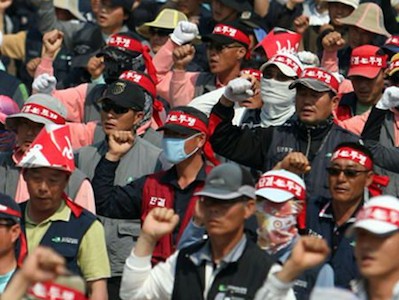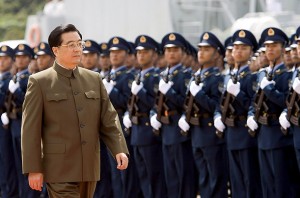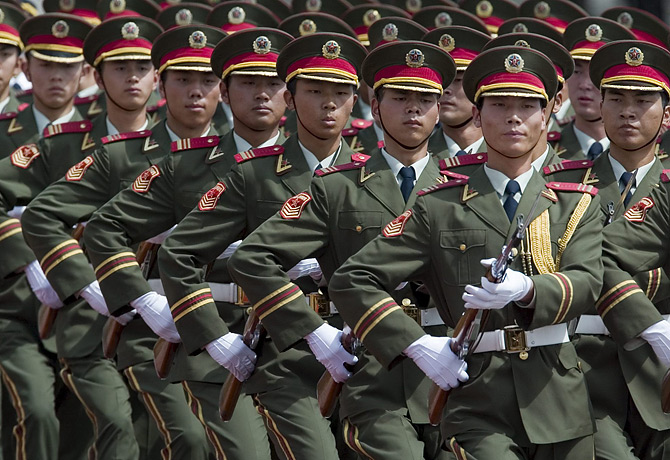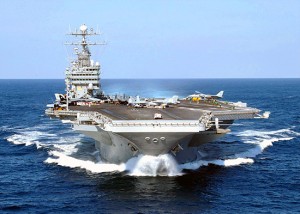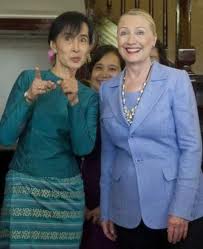Strikes spreading in China
By John Chan.wsws.org
Militant strikes have continued to spread in China, leading to violent clashes with police on several occasions over the past week.
According to the Hong Kong-based Oriental Daily, last weekend 4,000 workers at the Sanyo Electric plant in Shenzhen protested over the lack of compensation and job security after a merger with Panasonic Corp this month. The plant is a Sino-Japanese joint venture.
Employees were not told about the takeover until late last week. No compensation offer was made for their years working under the previous employer. This in turn affected their pensions and medical benefits. Workers pointed out that when Sanyo Motors, as well as the nearby Siemens factory, were taken over, employees were compensated for their years of service before being reemployed by the new owners.
Sanyo Electric workers demanded a similar deal. After talks with management and local officials broke down, workers took to the streets in protest, causing a major traffic jam. Riot police and security guards were deployed, leading to clashes in which several workers were injured and four arrested.
A more explosive strike by 2,000 workers erupted last Friday at a factory in Jiangxi province owned by Changhe Auto, a subsidiary of Chang’an Auto. According to the local Jingdezhen Daily, Changhe Auto—a joint-venture with Japan’s Suzuki—planned to transfer its productive assets to Chang’an-Mazda. The decision would end production at Changhe Auto, with no option for new jobs for the employees.
Chang’an is one of China’s big four automotive companies. It produced 1.83 million vehicles last year and has manufacturing bases in Malaysia, Vietnam, US, Mexico, Iran and Egypt. Like other major state-owned joint companies, it is listed on stock markets and participates in joint-ventures with Western and Japanese multinationals.
The restructuring of Chang’an is part of an industrial consolidation encouraged by the Chinese government and driven by a slowing auto market. After a massive expansion of the industry in China over the past decade, in which it overtook the US as the world’s largest automaker and market, auto sales grew by just 2.5 percent in 2011.
Angered by the plant closure and low monthly wages of just 1,700 yuan ($261) a month, Chang’an employees stopped work and stormed management’s offices. According to online accounts by workers, the general manager was arrogant and was driven off by furious strikers. Four hundred workers took to the streets and blocked traffic for four hours. They announced plans to take a collective petition to Beijing before the Chinese New Year next week.
Paramilitary police were deployed against workers protesting outside the plant last Sunday. (Click here to see the confrontation.)
Significantly, Chang’an workers have begun to direct their anger not only against the employer but also the Chinese Communist Party (CCP) regime. One worker declared online: “People of the whole country wield their fists to crush Zhongnanhai”—the central CCP headquarters in Beijing. Another wrote: “Everyone come for a strike! … Everyone come for an insurrection! Overthrow the dictatorship of the Chinese Communist Party! Overthrow the bureaucratic and privileged clique!”
Fearing the unrest could spiral out of control, the Jiangxi provincial authorities intervened to promise workers that the plant would be saved, even if the provincial government had to buy it. The assurance reportedly ended the strike as of yesterday.
Last Thursday, according to the Hong Kong-based China Labour Bulletin, more than 1,000 workers at a Foxconn-owned plant in Yantai, Shandong province, stopped work over the lack of equal wages for the same jobs. One young worker at the plant explained that Foxconn had announced that employees who joined the company before February 28 last year, would receive an increased monthly wage of 1,750 yuan ($268), while those employed later would receive 1,600 yuan and the new recruits would get 1,350 yuan. Some 80,000 workers work at the plant.
This was the second protest in a week at Foxconn plants. Hundreds of workers at the company’s Wuhan sweatshop had threatened a collective suicide over low wages and unbearable labour conditions. (See: “Foxconn workers threaten suicide protest in China”)
In recent weeks, strikes have continued to erupt in China, driven by falling export orders and a slowing economy, which have forced employers to step up attacks on the already low wages, poor conditions and jobs.
Last Wednesday, over 1,000 workers at Hong Kong-owned Creative Master at Dongguan in Guangdong province staged a protest over the sudden closure of the factory. The owners fled without paying outstanding wages. Workers held a street march with banners demanding the “heartless bosses” pay them for the Chinese New Year. Fearing an escalating protest, the local authorities promised to pay two months wages to the workers, and to hunt down the employers.
Creative Master was once the world’s largest contract manufacturer of metal toy cars for multinationals such as Mattel, PMA and Hornby, with 10 factories and 10,000 workers. The closure of the Dongguan factory—the company’s last—is an indication of the impact of the worsening world economic crisis on China’s export industries.
On January 4-5, around 1,000 workers at Wuxi Little Swan Co Ltd in Jiangsu province—the world’s third largest washing machine manufacturer—also staged a strike against the axing of 40 percent of the workforce, and cutbacks to wages and benefits. The firm has just been taken over by Midea, an emerging Chinese multinational, as part of the consolidation of the home appliances industry.
The unrest has spread to shipyard workers. On January 2, hundreds of workers at China’s seventh largest shipbuilder, Fujian Crown Ocean Shipbuilding Industry, blocked local traffic for hours. Authorities deployed armed police to disperse the protest. Workers took to the streets to demand three months of unpaid wages.
The National Development and Reform Commission indicated that new shipbuilding orders fell by 47.3 percent in the first 11 months of 2011 compared with a year earlier. This is another sharp indicator of declining global trade and the resulting economic slowdown that is impacting on China and propelling the working class into struggle.
 _______________________________________________________________________________
_______________________________________________________________________________
¶
ADVERT PRO NOBIS
IF YOU CAN’T SEND A DONATION, NO MATTER HOW SMALL, AND YOU THINK THIS PUBLICATION IS WORTH SUPPORTING, AT LEAST HELP THE GREANVILLE POST EXPAND ITS INFLUENCE BY MENTIONING IT TO YOUR FRIENDS VIA TWEET OR OTHER SOCIAL NETWORKS!
We are in a battle of communications with entrenched enemies that won’t stop until this world is destroyed and our remaining democratic rights stamped out. Only mass education and mobilization can stop this process.
It’s really up to you.
Do your part while you can.
•••
Donating? Use PayPal via the button below.
THANK YOU.
____________________________________________________________________________________________________
